Reframing JUAN DE VALDÉS LEAL The Conversion and Baptism of St. Augustine by St. Ambrose, Saint Louis Art Museum
Posted: 22 Feb 2024 by PML
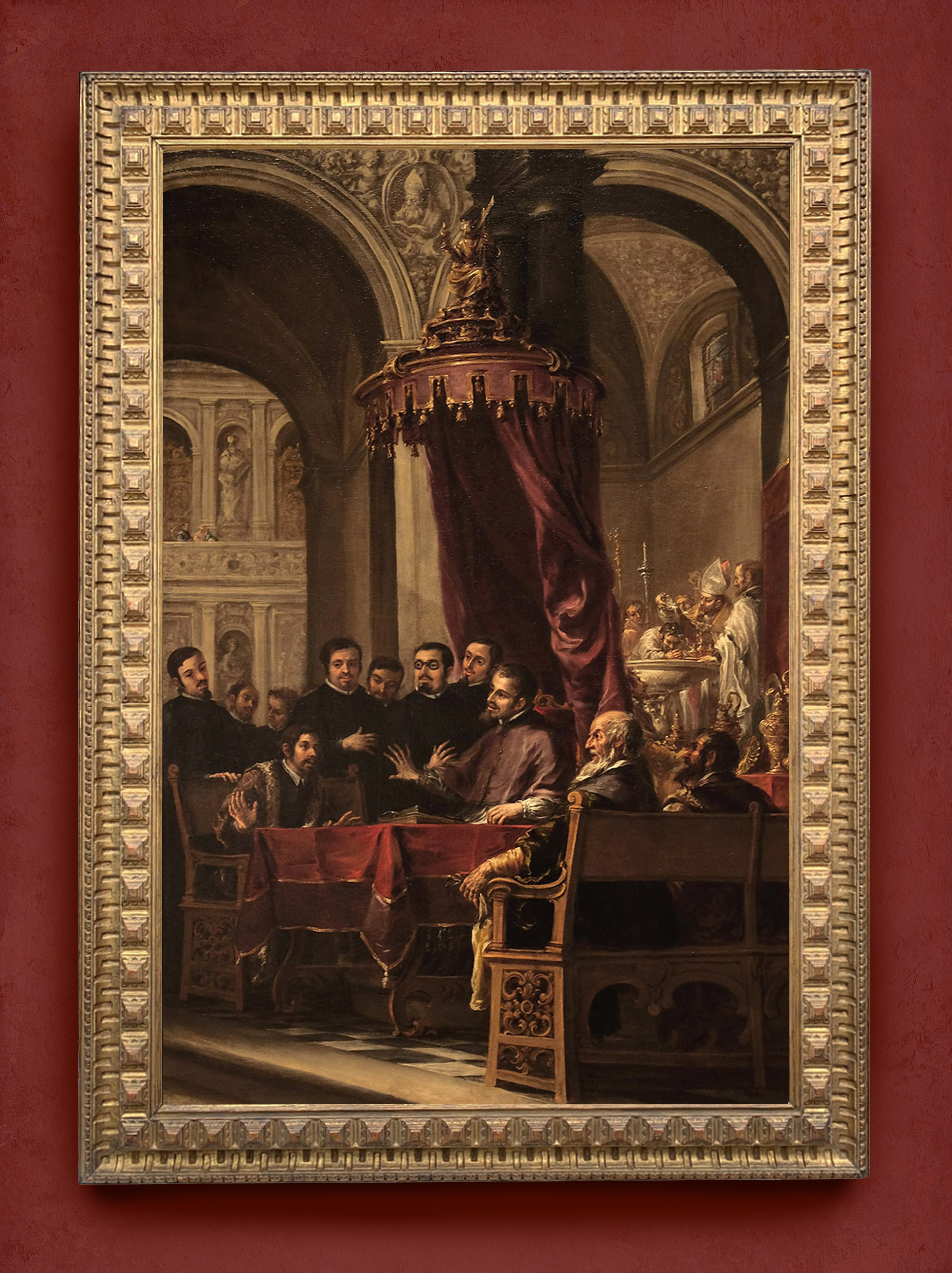
The project to reframe this painting by one of the great 17th century Spanish masters was very exciting, since it required the design to incorporate a sense of the piety, symbolism and Catholic splendour of the original setting. This is one panel from a set of seven canvases which surrounded an altarpiece of the Madonna and Child by Murillo in the private oratory of the Archbishop of Seville, in southern Spain.
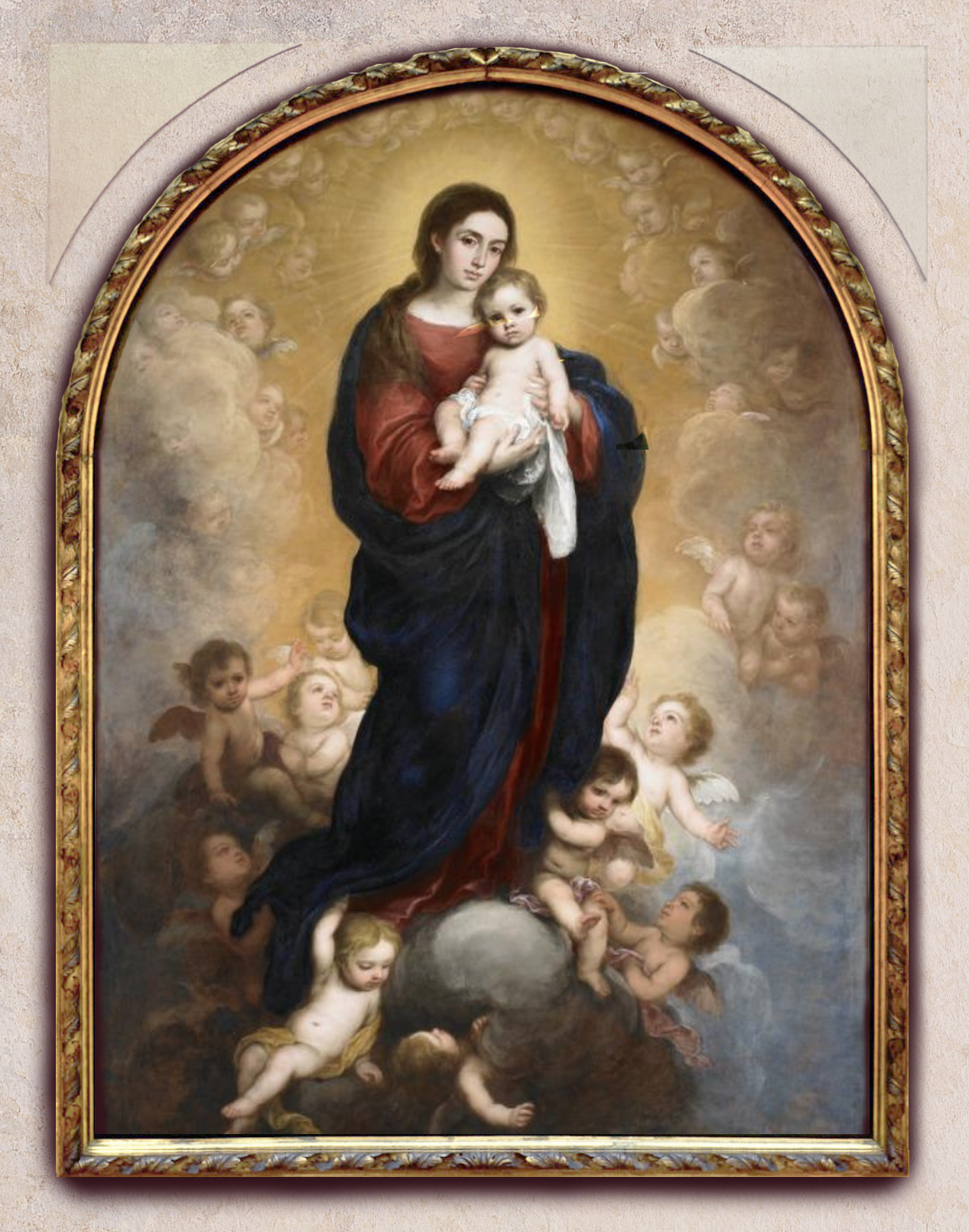
Two of the seven St Ambrose paintings probably provided the wing-like supporting scenes on either side of Murillo’s Madonna, whilst the other five – all rather taller, like the Saint Louis example – hung along the walls of the oratory. This was a room in the Archiepiscopal Palace of Seville, a grand Mannerist and Baroque building with a powerful physical presence, which has dominated one side of the square, the Playa Virgen de los Reyes beside the Cathedral, since the 13th century.
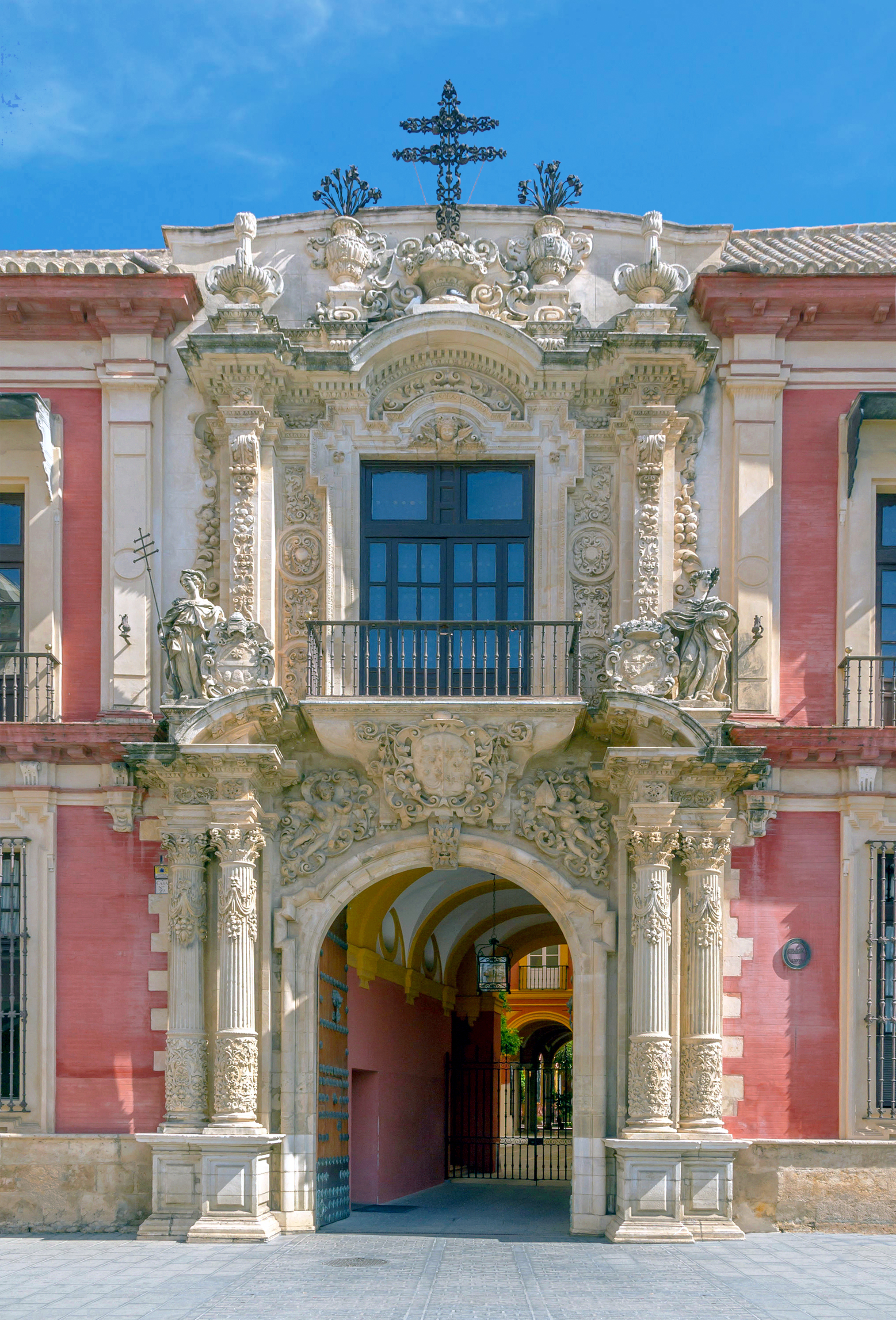
The Archbishop who commissioned this series of paintings was Ambrosio Ignacio Spínola y Guzmán, who occupied the archbishopric of Seville for fourteen years from 1670, and whose name saint was St Ambrose. The subjects of the altarpiece and its attendant paintings combined his devotion to the Virgin with episodes from the life of St Ambrose (the saint was painted as a portrait of the Archbishop). Four of the seven St Ambrose canvases are now in the Museo del Prado in Madrid, one is in the Legion of Honor, San Francisco, and one in the Museo de Bellas Artes of Seville. They became separated from each other during the Peninsular War of 1807-14 in Spain, when the country (along with the armies of Portugal and Great Britain) was fighting against French invasion. The Archbishop’s Palace was requisitioned by Napoleon’s general, Marshal Soult, and the paintings were looted, not reappearing on the art market until the 20th century.
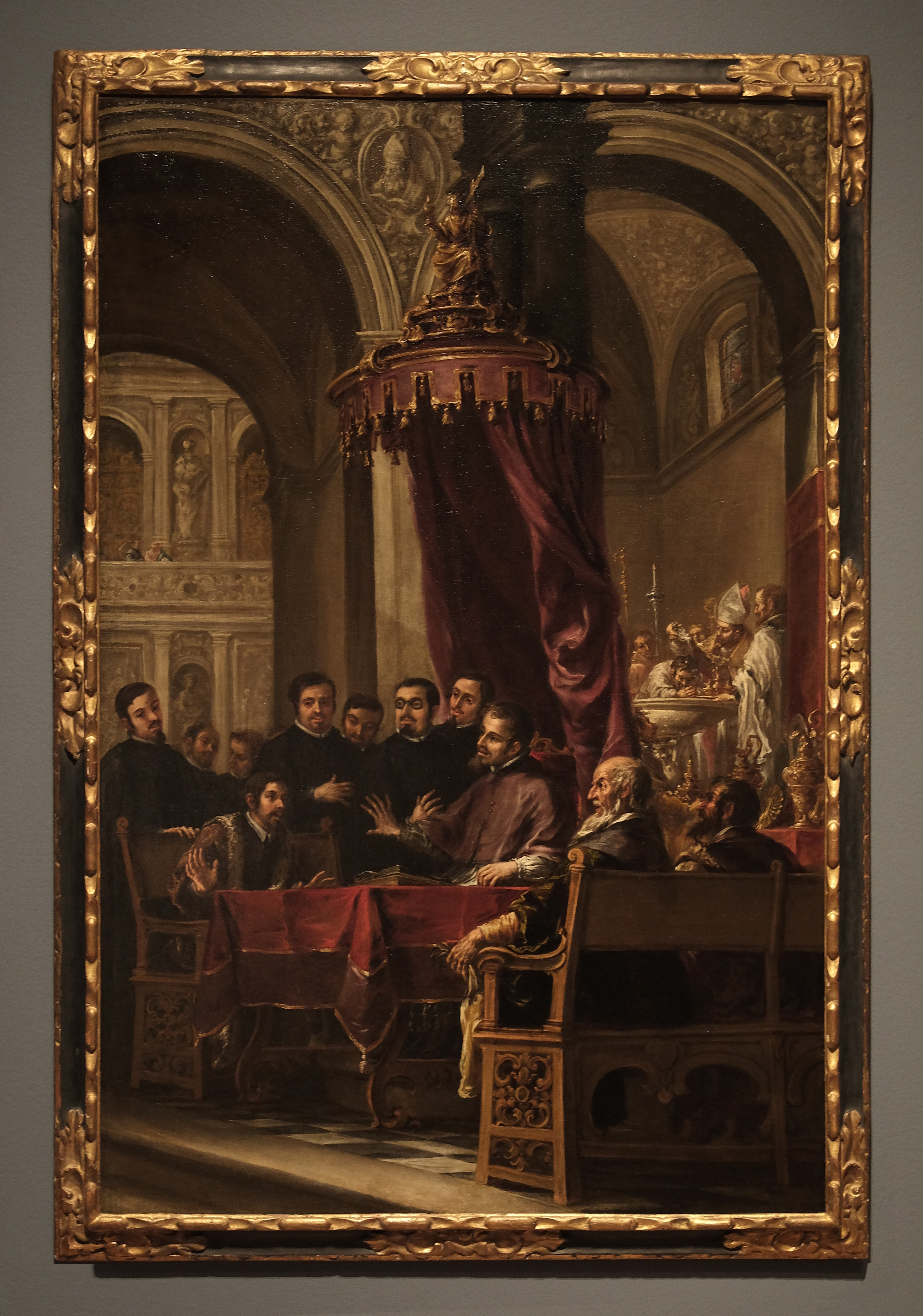
The Saint Louis painting of St Ambrose must at some point have been in the same collection as the four Prado paintings from the series, as they were all framed identically in modern reproductions of a 17th century Spanish reverse frame, with black frieze and carved giltwood corners and centres, which the Prado pictures retain. However, these are very narrow for the height of the canvases (5 ½ feet), and do not present them with the authority and symbolic richness which the Archbishop himself might have required. He had, after all, paid Murillo a thousand ducats for his central image of the Madonna and Child, which could be roughly in the area of £120,000 or $150,000 today, and would presumably have paid Leal in proportion for his seven St Ambrose pictures.
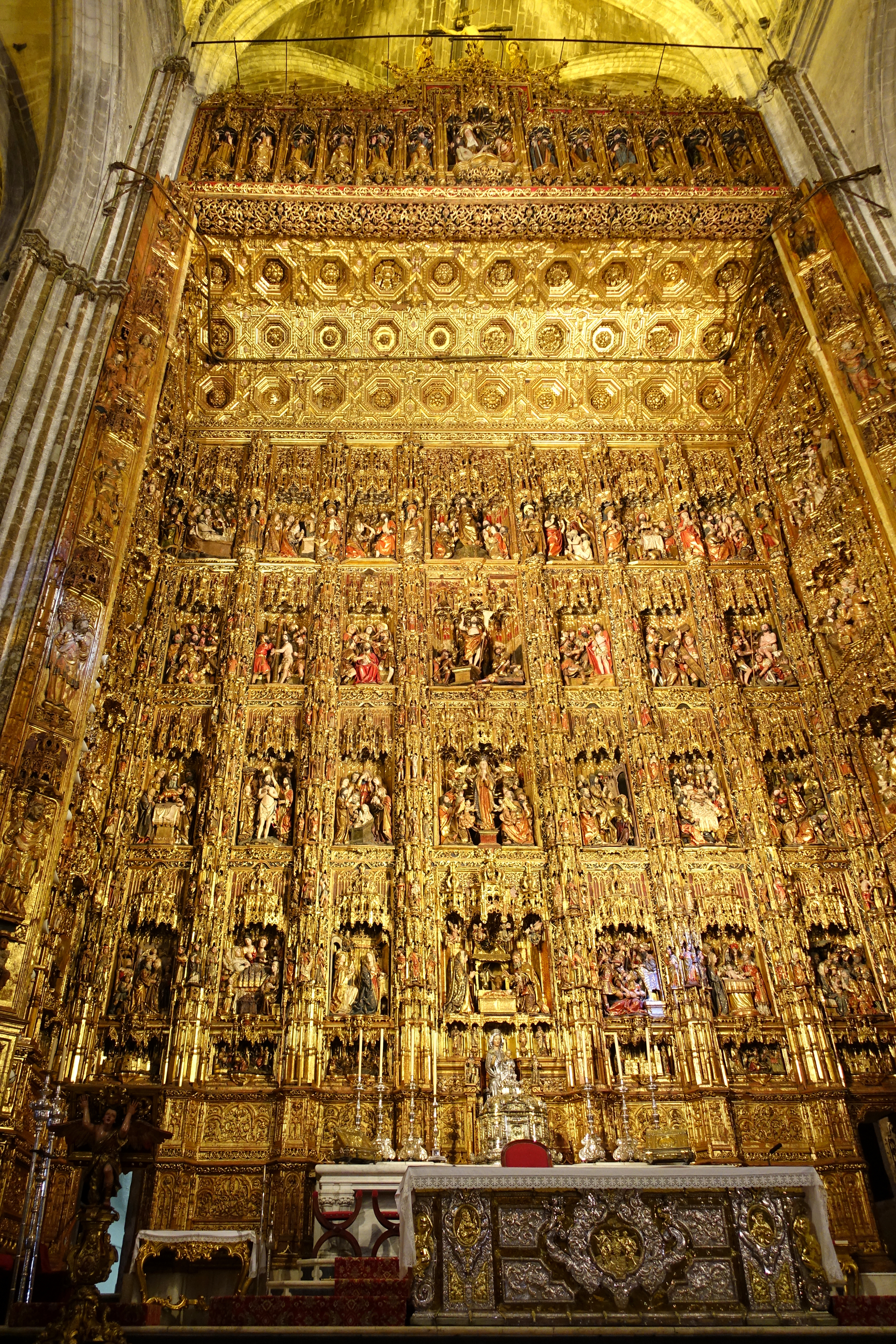
The provision of frames would have been, at that time, quite as important, considering the walls of carved and fretted giltwood in Spanish churches which, from the 14th century onwards, form both high and minor altarpieces: soaring ramparts of delicately pierced and arched niches containing sculpted polychrome figures and scenes, filling the whole east end, even of a cathedral. The high altarpiece of Seville Cathedral itself is the largest Gothic altarpiece in existence – 20 by 23 metres – and took more than 80 years to complete. Altarpieces in the 17th and 18th century were equally decorative; triumphs of expert wood sculpture as much as of painting.
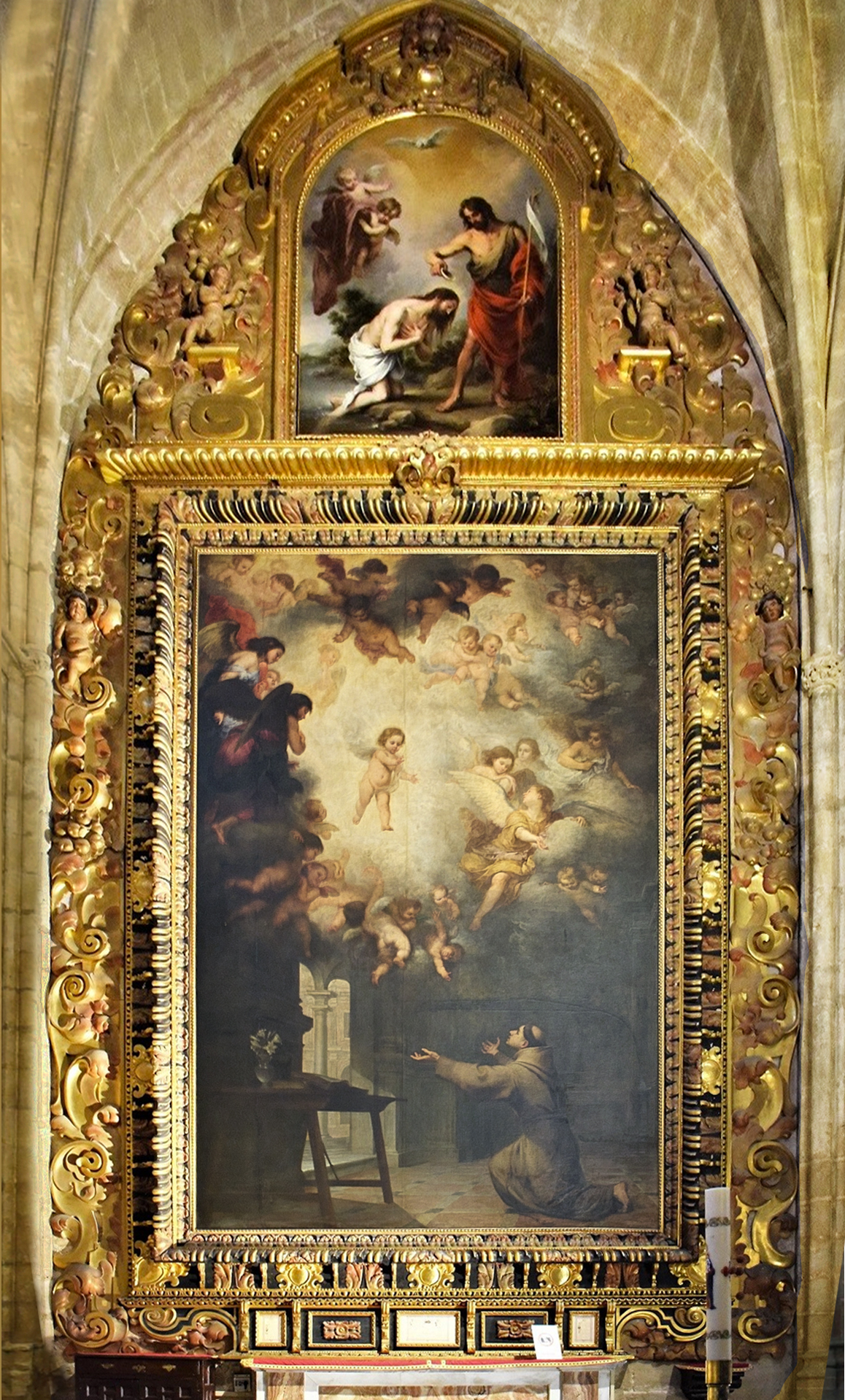
For example, Murillo painted this altarpiece for the baptistery chapel of the cathedral almost twenty years before Archbishop Ambrosio commissioned him to paint the Madonna & Child for his oratory in the nearby Archbishop’s Palace. The Vision of St Anthony was later given a gilt and polychrome scrolled and fluted Mannerist frame, which is as striking in its way as the high altarpiece of the cathedral; and since it was executed only five years before the oratory paintings, it may well be that Bernardo Simón de Pineda may have designed and carved the frames for those as well.
A prelate who lives in a vast and architecturally decorative palace; who sets out to fill his private chapel there with a series of paintings based on the life of his name saint, and whose own features are given to each representation of that saint; who employs a costly artist like Murillo to paint him a Madonna in glory; - that prelate is not going to stint on the carving of a set of frames appropriate to the paintings, the building, his own position, and the cathedral under his care.
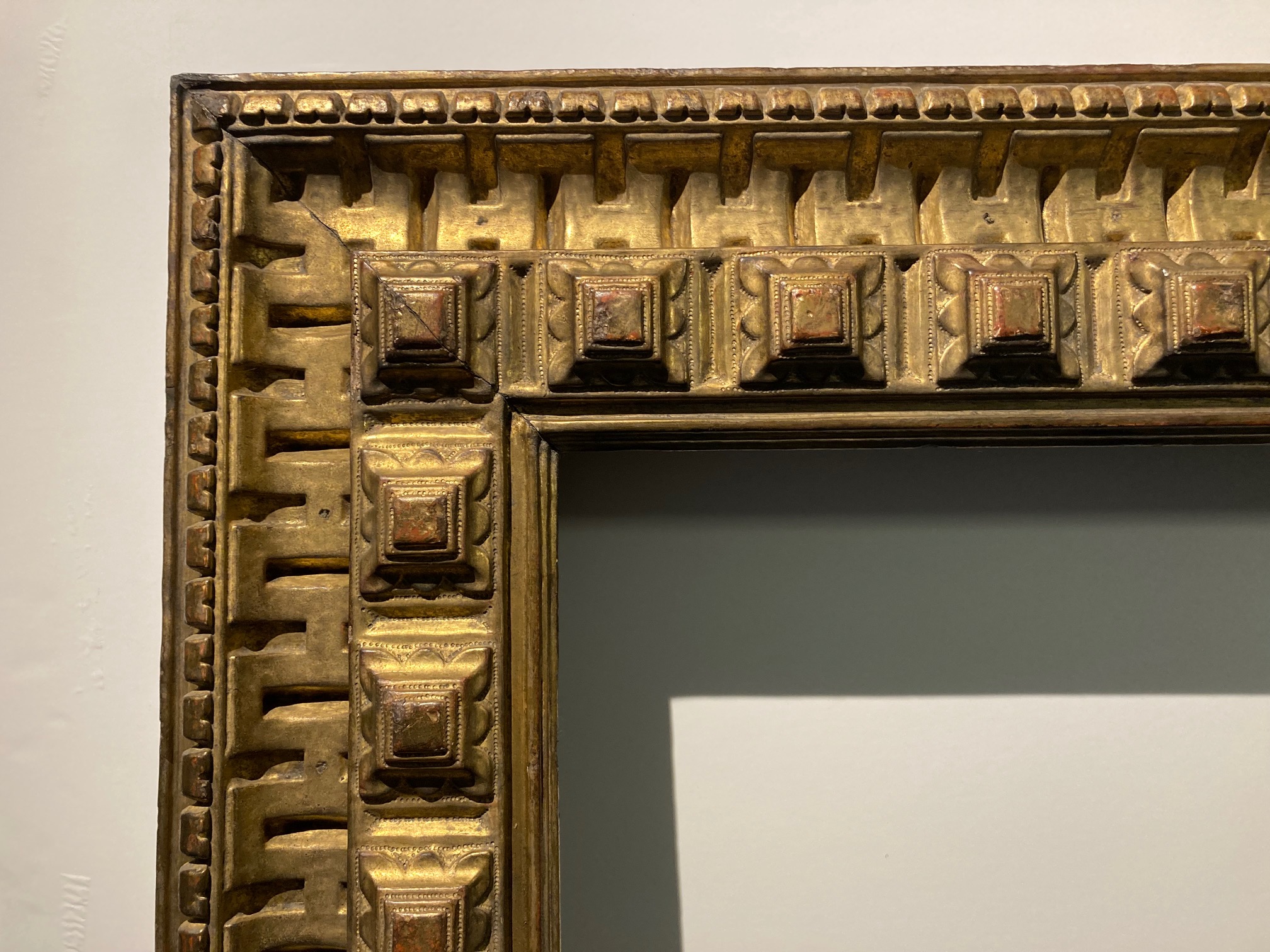
The curators of the Saint Louis Art Museum therefore chose to reframe their image of the Conversion of St Augustine... in an intricate and beautifully-carved replica of a so-called ‘Herrera’ Mannerist frame. This combines architectural ornaments in a dramatic dance of motifs with a Moorish influence, including square, gem-like bosses from carved chests, cornices or silverwork, all of them providing repeated faceted shapes around the picture which catch the light in a necklace of movement and throw it onto the painted surface.
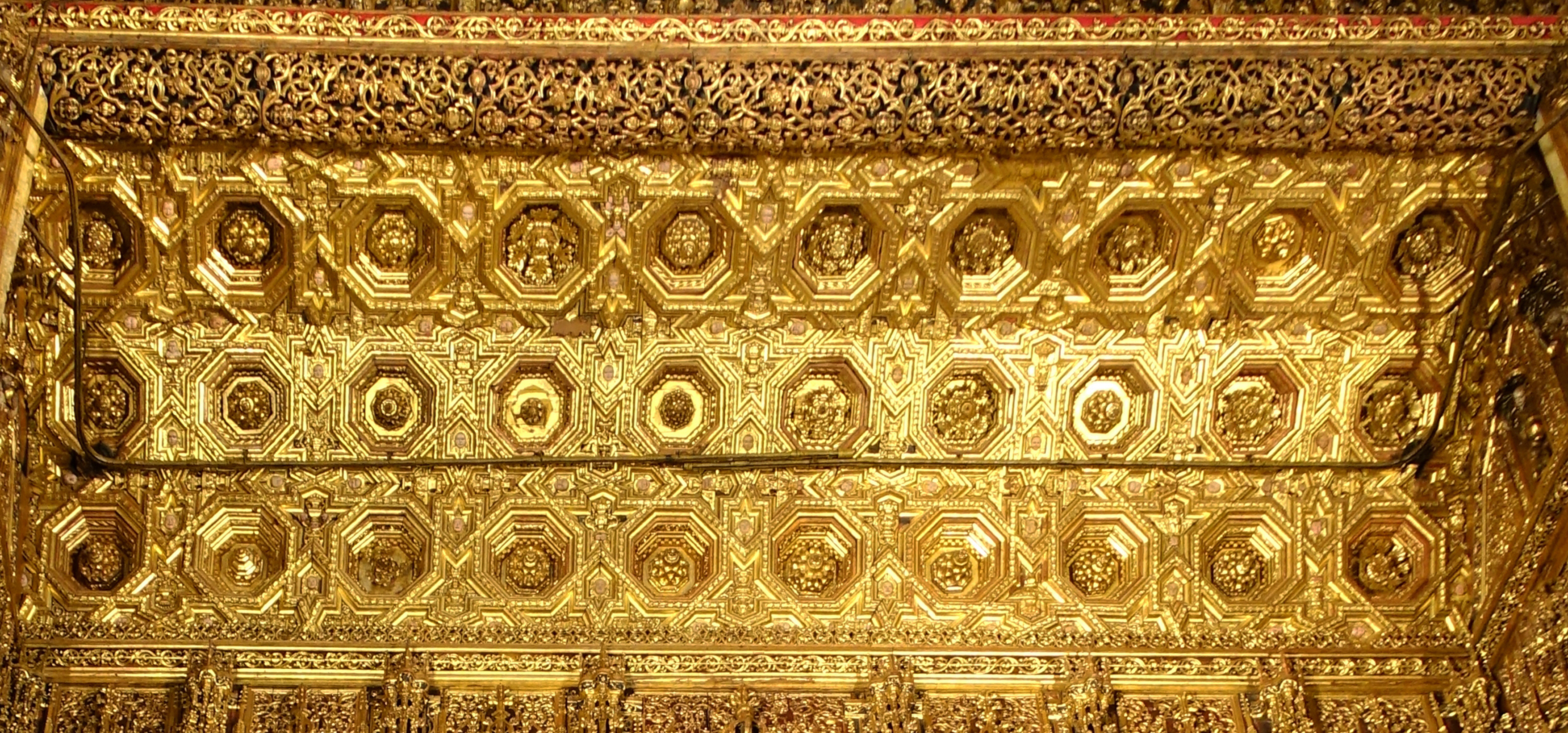
Not only are these bosses like inverse reflections of the geometic coffering beneath the canopy of the high altarpiece, they also recall the set of ‘Herrera’ frames made for a series of paintings by Zurbarán in the sacristy of the Monastery of Nuestra Señora de Guadalupe, 25 years earlier.
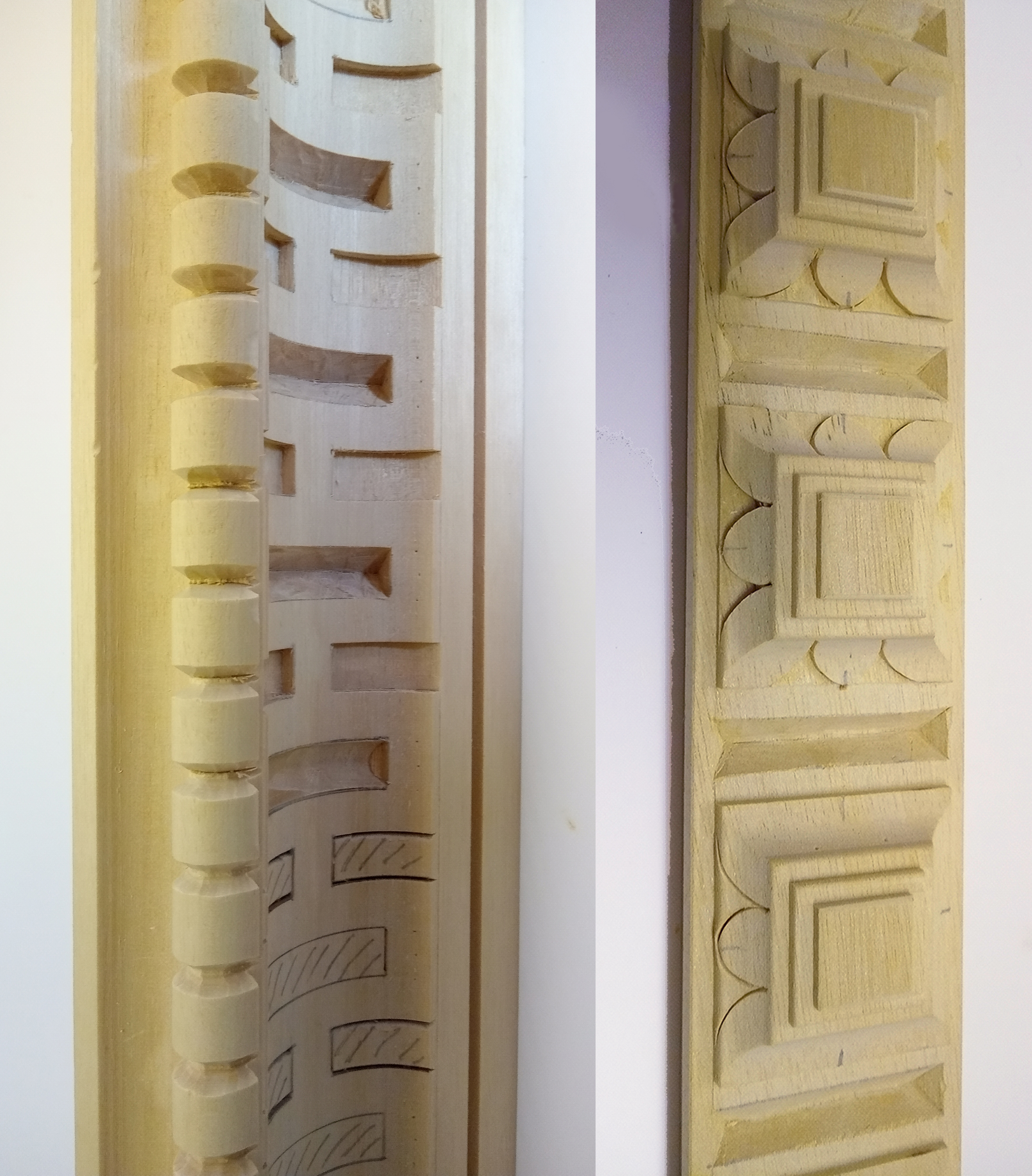
The frame was meticulously carved from the antique model, reproducing the characteristic knulled back edge (a simplification of the ‘cotton-reel’ ornament found on many ‘Herrera’ frames), the H-shaped fluting in the scotia or hollow, and the square bosses at the top/sight edge. The latter are each set in a fringe of stylized leaves – the only non-geometric form on the frame.
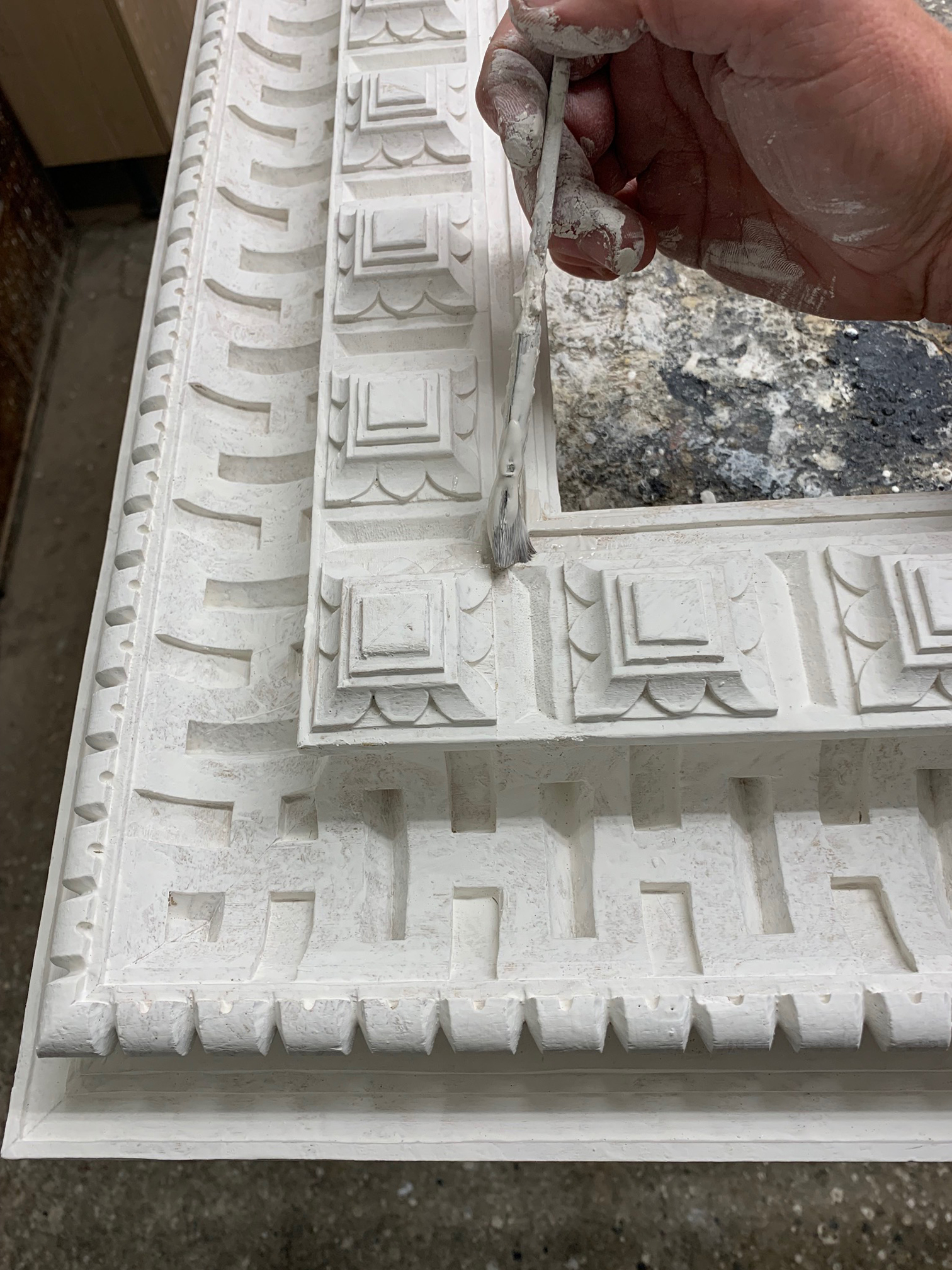
All the wooden elements were assembled, and then the frame was covered with layers of fine gesso, following the practice of framemakers from the 13th century. This helps to unite and soften the carved areas, and forms a vehicle to carry the finish - the gold leaf.
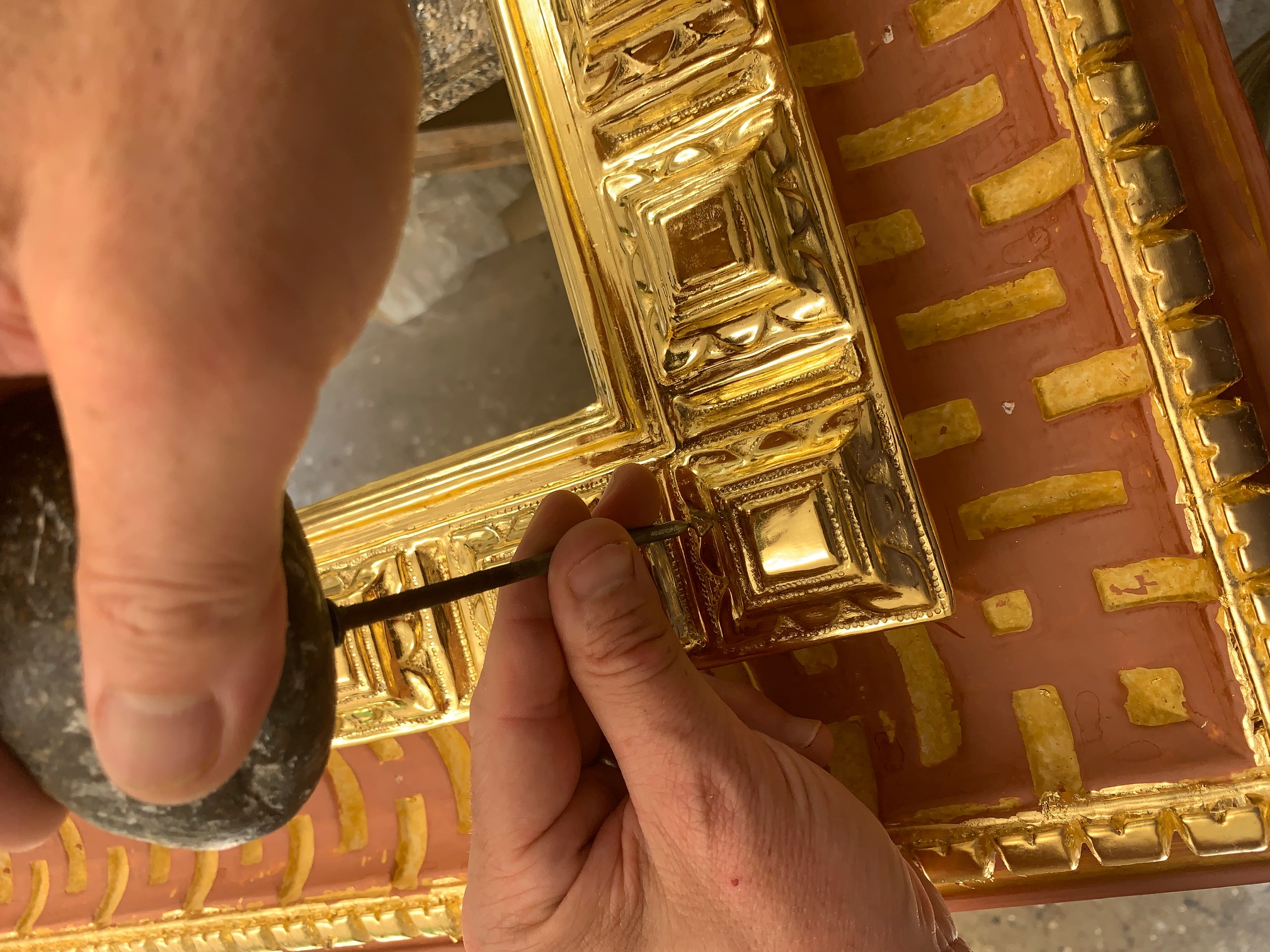
When dry, the gesso is rubbed down until it forms an ultra smooth surface, and is painted with bole, or gilder’s clay, in red and yellow ochre. This variation in colour modulates the tone of the gold leaf slightly, showing through worn areas to provide a warmer or a lighter effect. The bole is damped, so that the gold leaf adheres to it, and when this is also dry, the gold can be burnished to a high shine. Punchwork is added around the square bosses, giving both definition and a variation of texture.
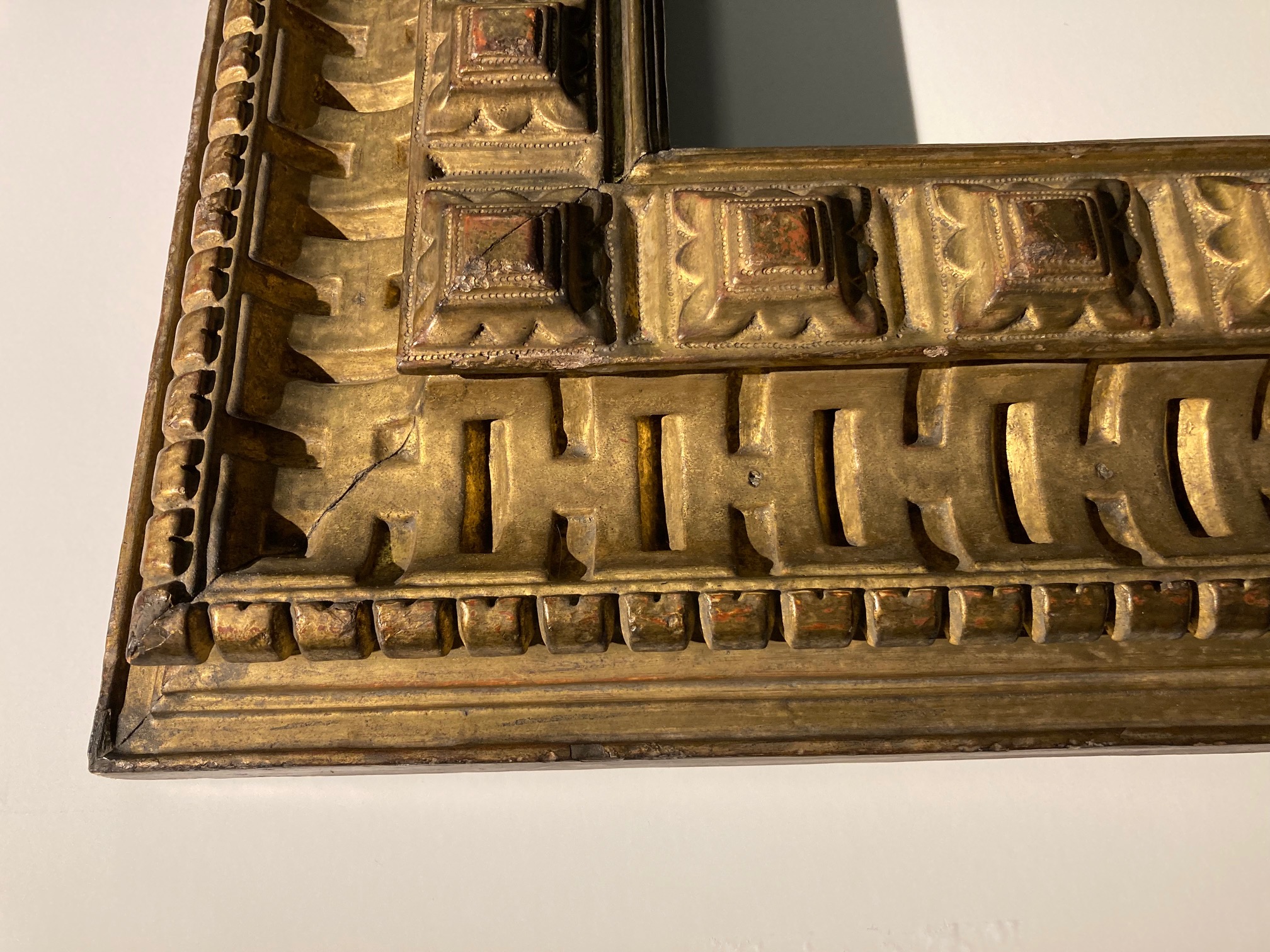
The frame is finally patinated with a wash of toning, distressed, and patinated again. This process imitates the effects of ageing, accidents and wear, and helps to harmonize the frame with the 350 year-old painting.

The completed frame with the painting: imagine the series of seven St Ambrose canvases in frames like this, surrounding an even more elaborate setting on Murillo’s Madonna & Child... how rich and glorious the Archbishop’s oratory might have looked, with the work of three exceptional artists produced to the glory of God.
